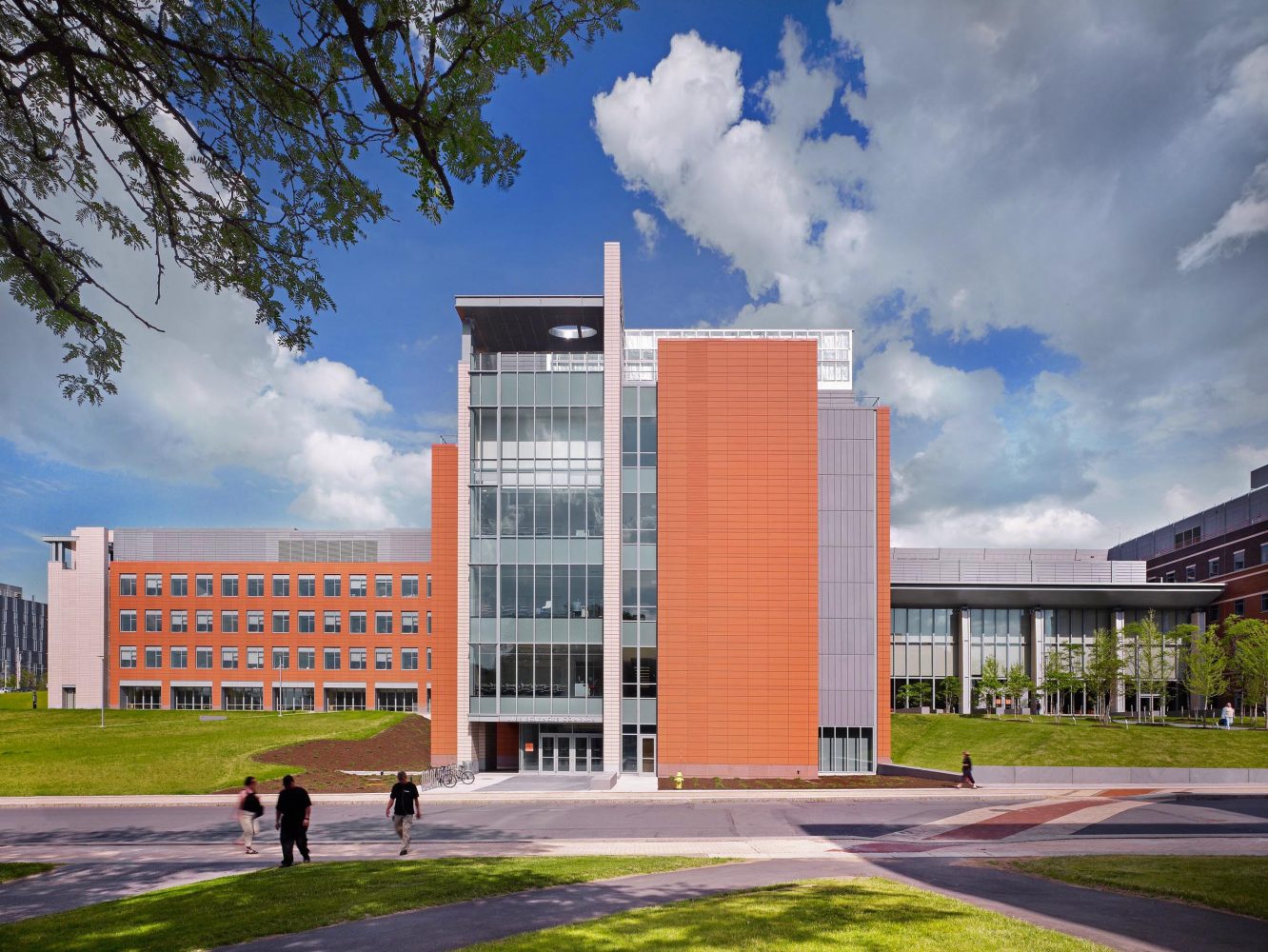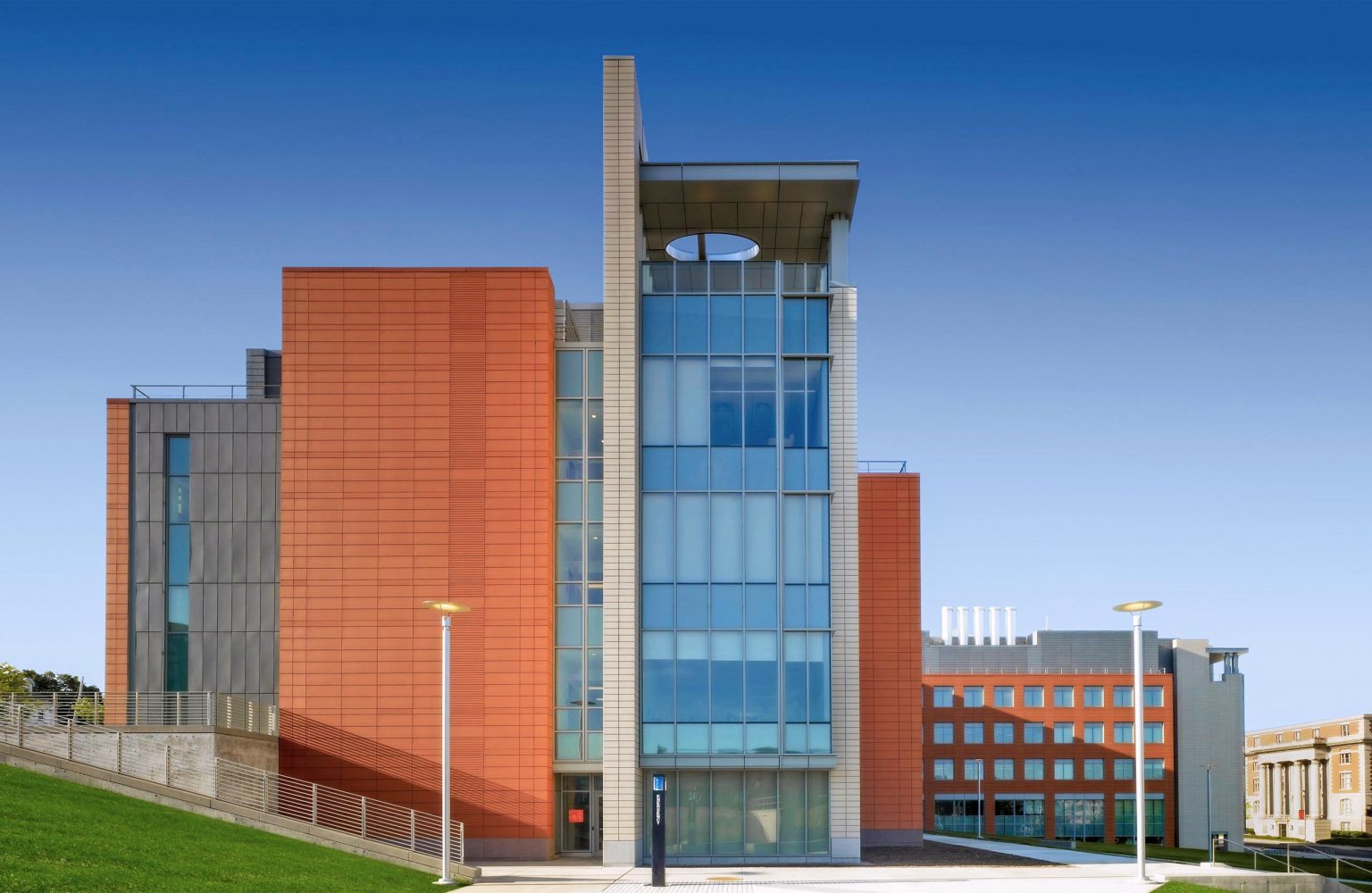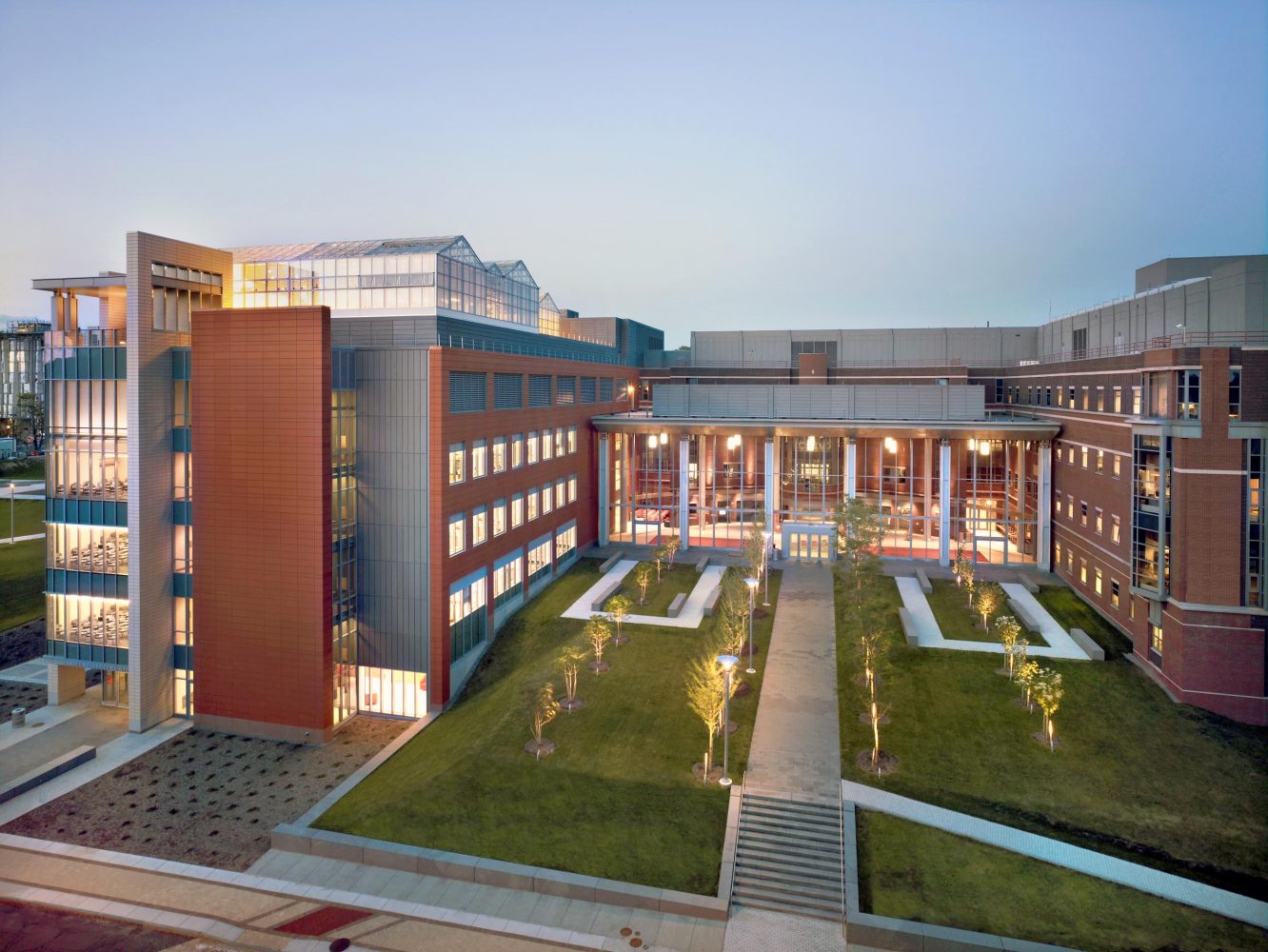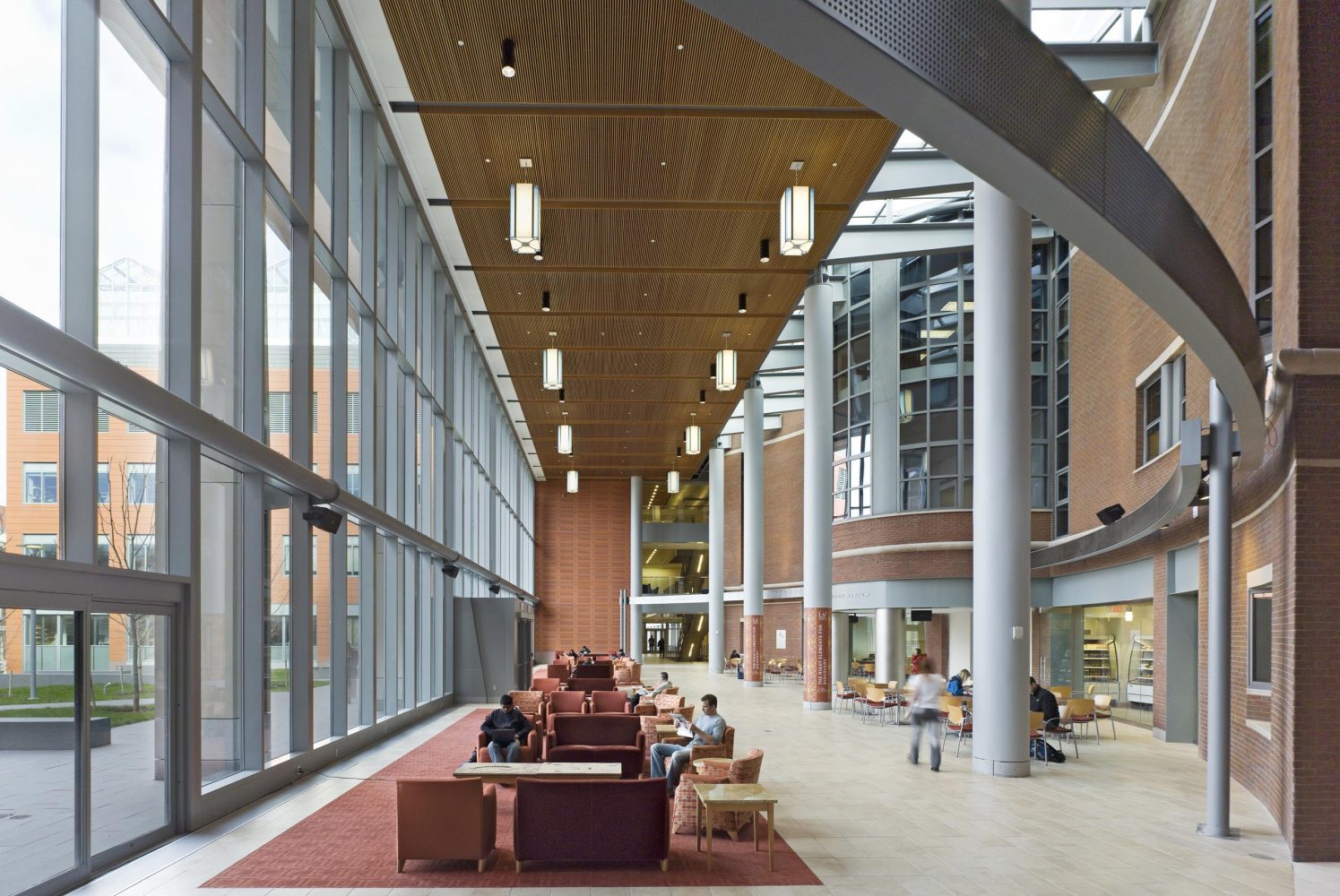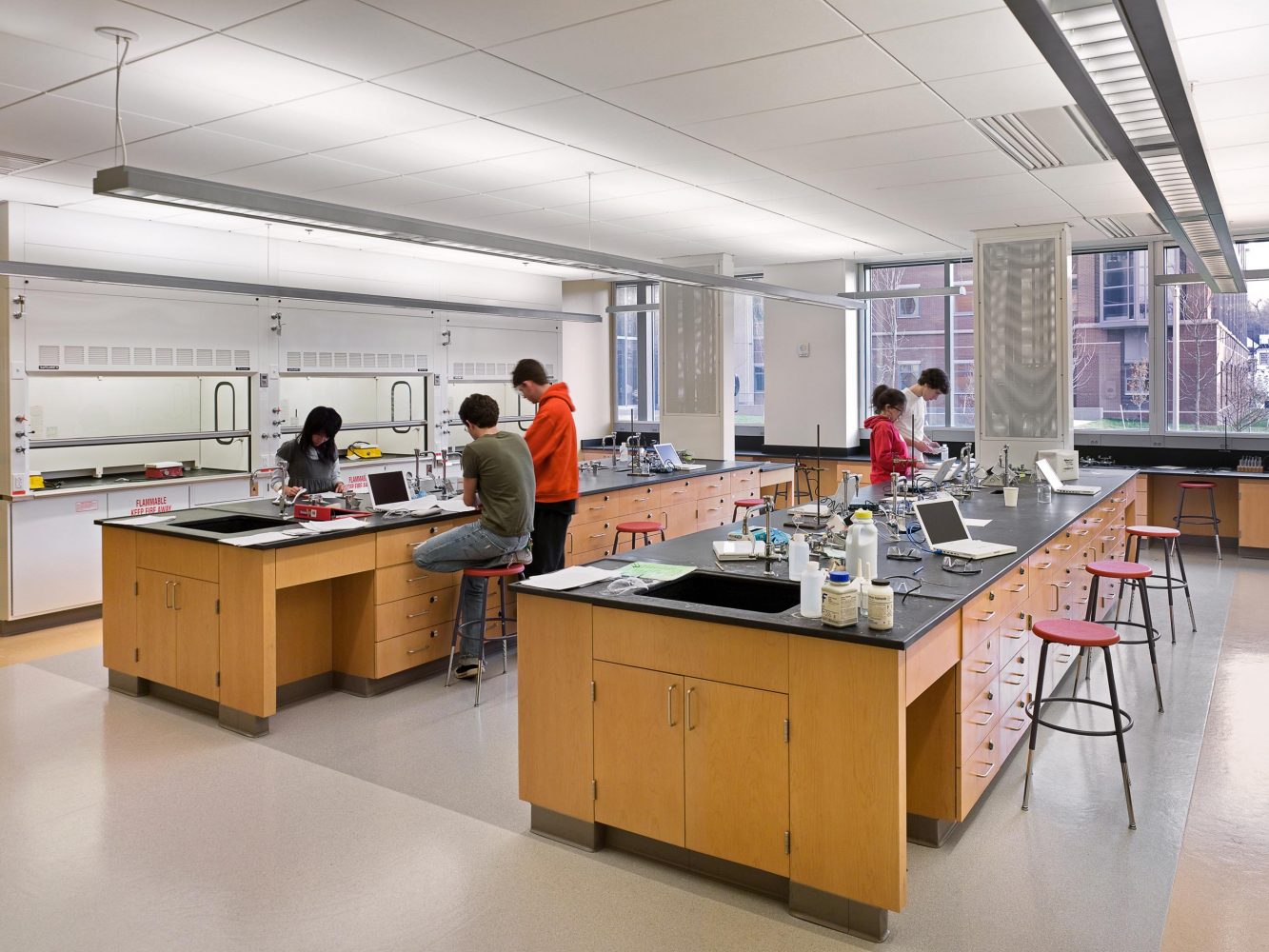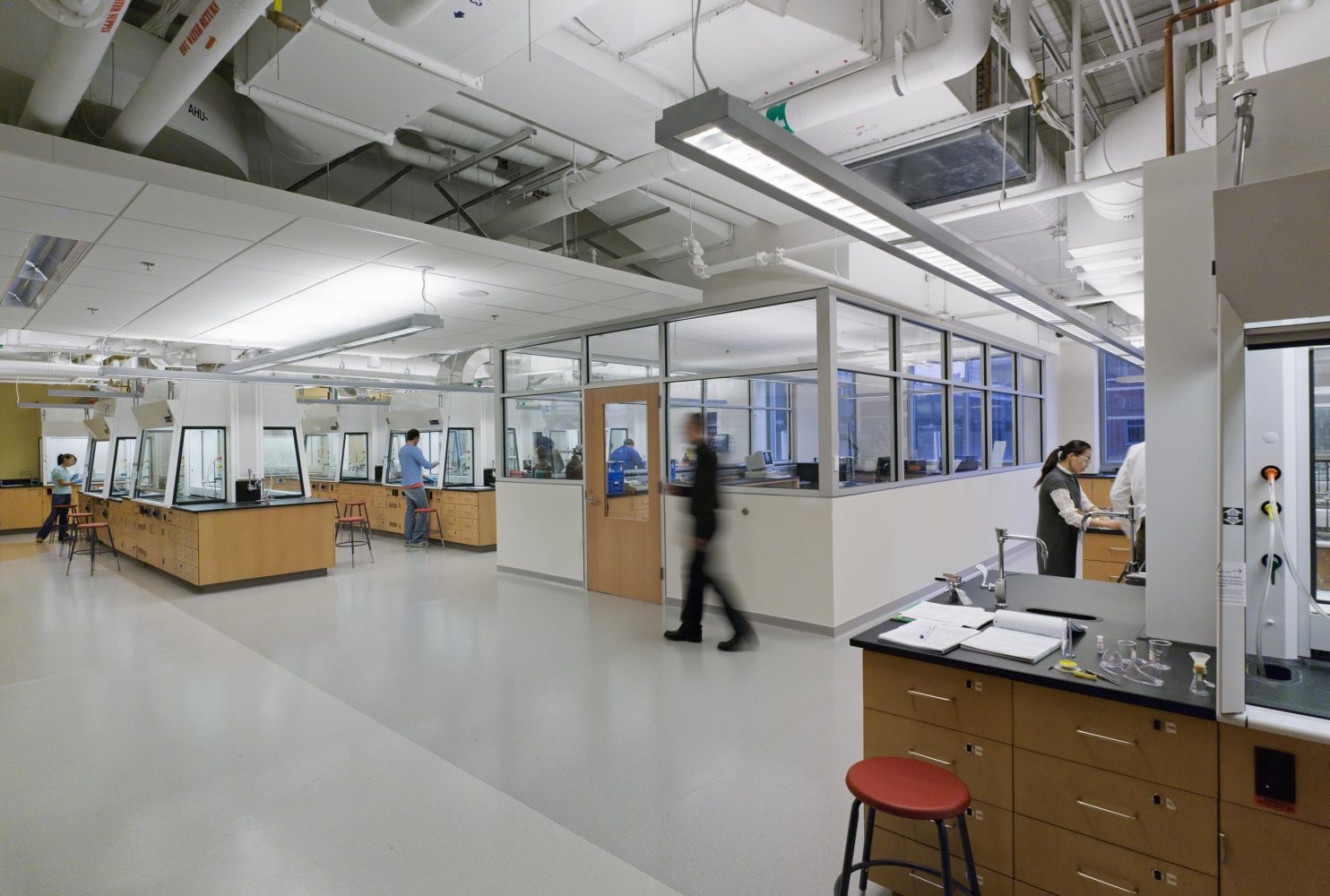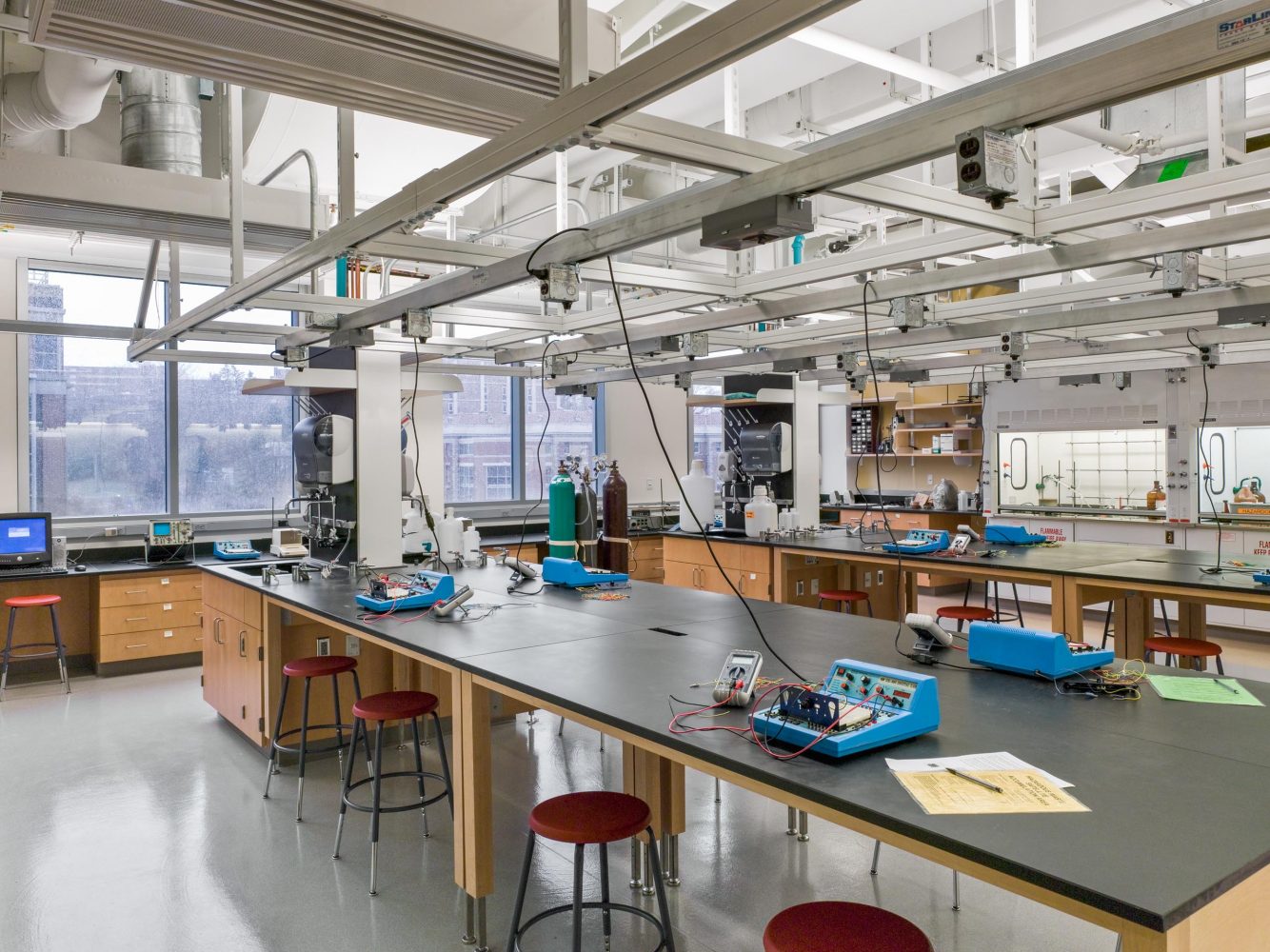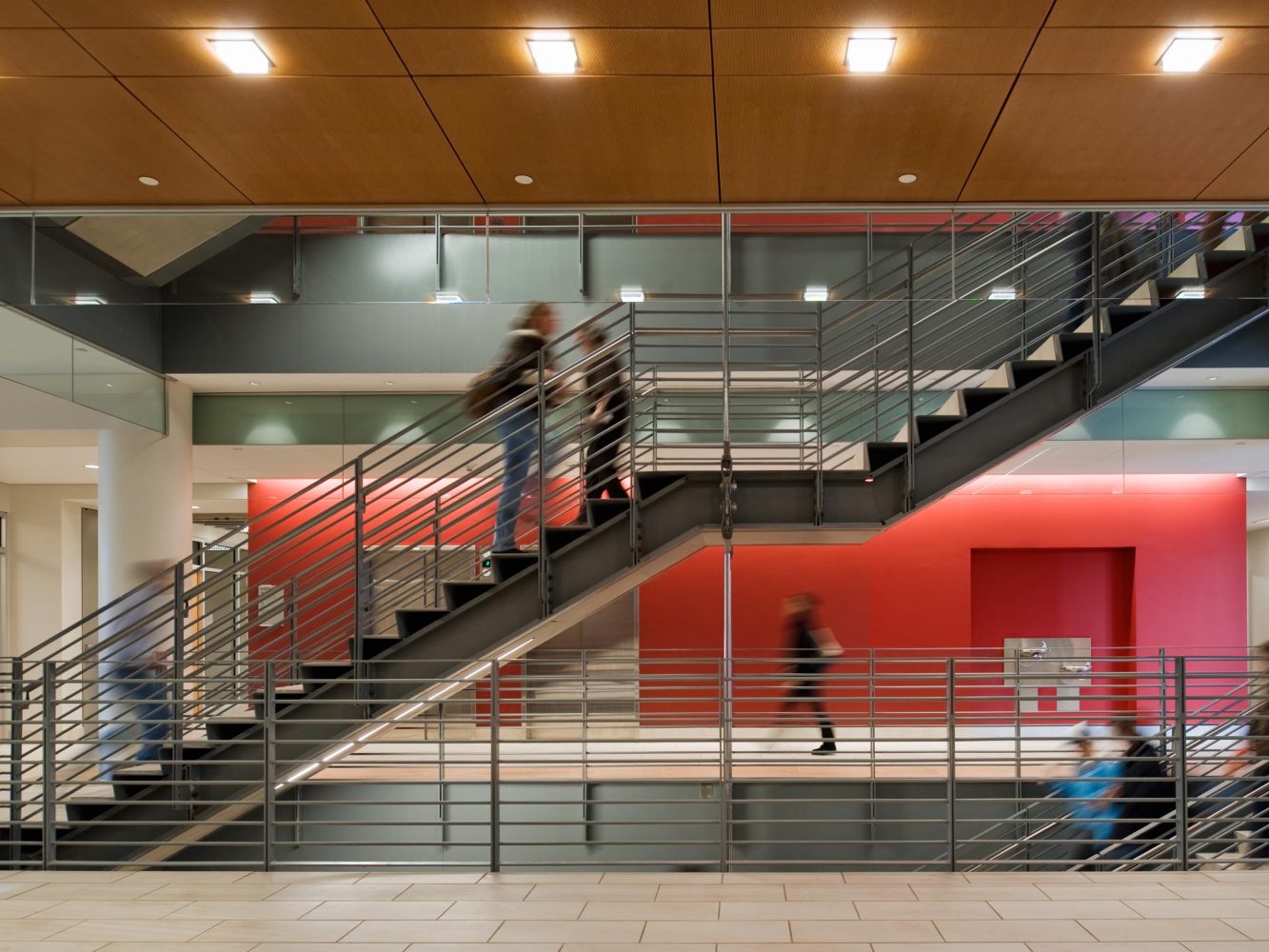Syracuse University Life Sciences Building
Syracuse University Life Sciences Building
“Ellenzweig exhibited not only a strong understanding of our research mission, but also a sensitivity to the overall architectural implications of locating a very large science complex on the historic core of our campus. Our labs are designed to meet the University’s current research needs, but have inherent flexibility for future customization, growth, and change.”
- Brenda Law, Architect Manager, Design and Documentation Campus Planning, Design, and Construction, Syracuse University
Syracuse University Life Sciences Building
Syracuse, New York | 235,000 gsf | $78 million | 2012 (phased)
The Life Sciences Building unifies the research and teaching facilities of the Biology Department and provides Chemistry Department teaching facilities with a new home adjacent to existing Chemistry research facilities. Ellenzweig provided programming, architectural design, laboratory planning and design, and construction administration services. The Complex is the key component of Syracuse University’s initiative to improve teaching and research facilities for the Natural Sciences and Mathematics Division of the College of Arts and Sciences, and facilitates the interdisciplinary collaboration integral to today’s Life Sciences.
Organized in two wings, one for research and one for teaching, the new Life Sciences Building provides research laboratories for Molecular and Cellular Biology and teaching laboratories for the Departments of Biology and Chemistry. Various lab support facilities, such as a greenhouse, plant growth facility, and future vivarium (fully designed, constructed as shell space), are also housed in the building, as are campus-wide classroom and lecture facilities, faculty offices, departmental administrative offices, lounges, and common rooms. A new atrium, enlivened by a ground-floor café, connects the two wings of the Life Sciences Building and links the new building with the existing Center for Science and Technology, where the Chemistry research laboratories are located.
The Life Sciences research wing houses modular Biology laboratories featuring “customizable zones” in each lab and a direct adjacency to faculty offices. Students are welcomed into the research wing and provided with meeting space outside faculty offices and adjacent to research laboratories. Common support facilities are organized in the center of the plan ringed by circulation, leaving the research labs organized on the perimeter of the building. This organization enhances visibility into the labs from corridors and permits natural light to penetrate deep within the space.
The teaching wing provides modular Biology and Chemistry teaching laboratories, organized on four floors, which maximizes student/faculty interaction. Biology teaching laboratories are organized on the same floors and across the corridor from Chemistry teaching laboratories to facilitate interdisciplinary collaboration in teaching. This organization allows sharing of support spaces, facilitating the development of interdisciplinary majors such as the Biochemistry program.
The building exterior is designed to respond to the historic Syracuse campus context while acknowledging the future-oriented research and teaching taking place inside the building. Materials – brick, metal, glass – are compatible with the campus context and in keeping with the University’s Master Plan.


